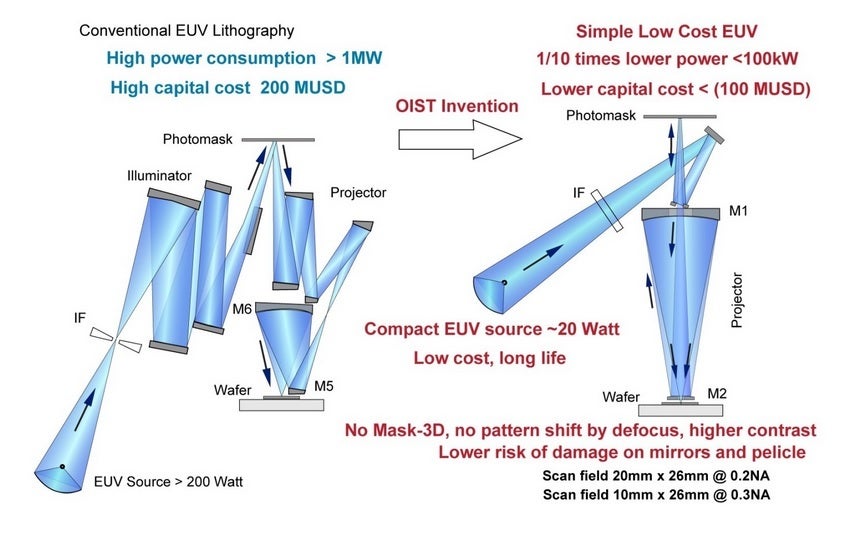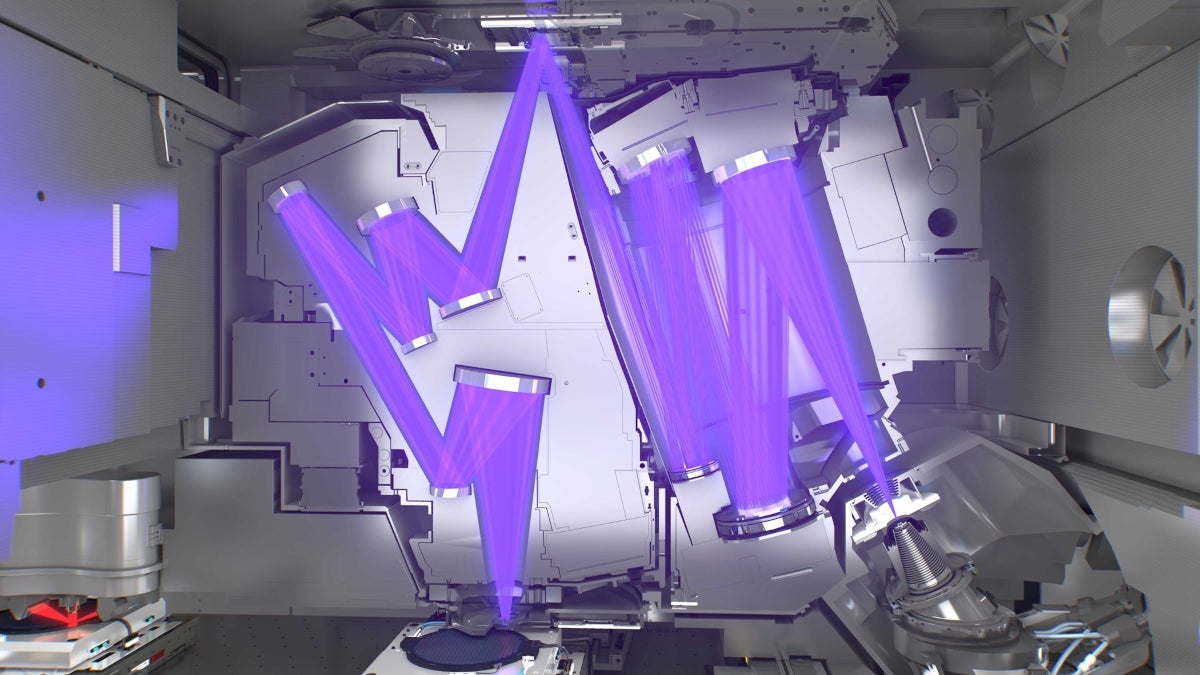Only one company makes these machines, Dutch firm ASML, and the second-generation EUV machines are already available. Known as High-NA, these $400 million machines help foundries build integrated circuits using a 7nm process node and lower. It obviously takes huge sums of money to open a foundry to make chips and these costs are passed on to smartphone manufacturers who then pass them on to us.
Innovative EUV devised by Okinawa Institute of Science and Technology can be a game changer in chip manufacturing

At left, the traditional EUV, and at right, the lower cost model from OIST. | Image credit-OIST
The OIST report mentions that the new technologies for the EUV machine deal with a couple of issues previously considered insurmountable. The new EUV machine employs an optical projection system that requires the use of only two mirrors. The second innovation allows light from the EUV to be directed onto logic patterns on a flat mirror without blocking the path of the light. Professor Shintake says, “This invention is a breakthrough technology that can almost completely solve these little-known problems.”
Because EUV rays have extremely short wavelengths, they cannot travel through transparent lenses. Instead, in EUV machines, the light is directed by using crescent-shaped mirrors that direct the light in a zig-zag pattern. Because the light deviates from the central axis, it reduces the overall performance of the machine.
Shintake discovered that by aligning two axisymmetric mirrors with tiny center holes in a straight line, superior results can be achieved. Where traditional EUV machines use over 1MW of power and have capital costs of over $200 million, the innovative low-cost machines use less than 100kW of power, and capital costs are under $100 million. In addition, typical EUV machines require a source of light that measures over 200W while the low cost unit requires a 20W light source.
Reducing the number of mirrors from 10 to four could prevent the machine from losing too much energy
EUV energy weakens by 40% with every bounce of light off of a reflective mirror. The report says that by limiting the number of mirrors used to four from the EUV source to the wafer, “more than 10% of the energy makes it through, meaning that even a small EUV source with an output of a few tens of watts can work just as effectively. This can lead to a significant reduction in power usage.” With the new two-mirror projection method replacing the six used for projection with a conventional EUV, less energy is wasted.
Professor Shintake states, “The global EUV lithography market is expected to grow from 8.9 billion USD in 2024 to 17.4 billion USD in 2030, with an average annual growth rate of approximately 12%. This patent has the potential to generate tremendous economic benefits.”
